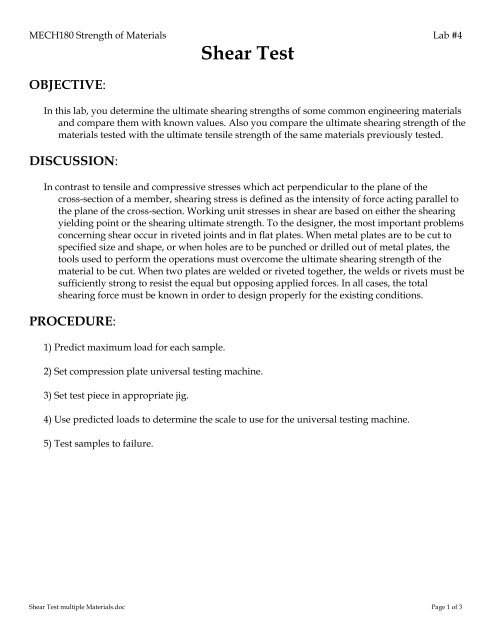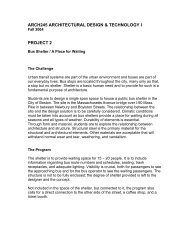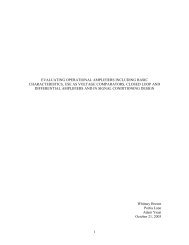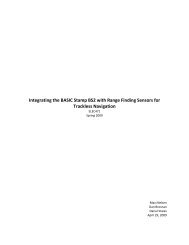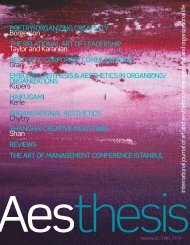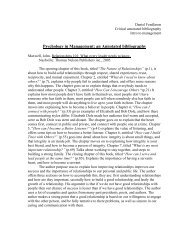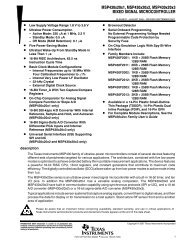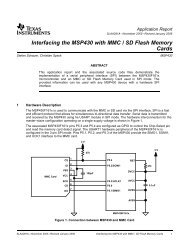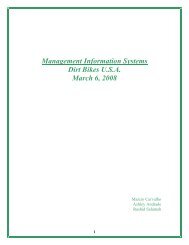Create successful ePaper yourself
Turn your PDF publications into a flip-book with our unique Google optimized e-Paper software.
MECH180 Strength of M<strong>at</strong>erials Lab #4<br />
OBJECTIVE:<br />
<strong>Shear</strong> <strong>Test</strong><br />
In this lab, you determine the ultim<strong>at</strong>e shearing strengths of some common engineering m<strong>at</strong>erials<br />
and compare them with known values. Also you compare the ultim<strong>at</strong>e shearing strength of the<br />
m<strong>at</strong>erials tested with the ultim<strong>at</strong>e tensile strength of the same m<strong>at</strong>erials previously tested.<br />
DISCUSSION:<br />
In contrast to tensile and compressive stresses which act perpendicular to the plane of the<br />
cross-section of a member, shearing stress is defined as the intensity of force acting parallel to<br />
the plane of the cross-section. Working unit stresses in shear are based on either the shearing<br />
yielding point or the shearing ultim<strong>at</strong>e strength. To the designer, the most important problems<br />
concerning shear occur in riveted joints and in fl<strong>at</strong> pl<strong>at</strong>es. When metal pl<strong>at</strong>es are to be cut to<br />
specified size and shape, or when holes are to be punched or drilled out of metal pl<strong>at</strong>es, the<br />
tools used to perform the oper<strong>at</strong>ions must overcome the ultim<strong>at</strong>e shearing strength of the<br />
m<strong>at</strong>erial to be cut. When two pl<strong>at</strong>es are welded or riveted together, the welds or rivets must be<br />
sufficiently strong to resist the equal but opposing applied forces. In all cases, the total<br />
shearing force must be known in order to design properly for the existing conditions.<br />
PROCEDURE:<br />
1) Predict maximum load for each sample.<br />
2) Set compression pl<strong>at</strong>e universal testing machine.<br />
3) Set test piece in appropri<strong>at</strong>e jig.<br />
4) Use predicted loads to determine the scale to use for the universal testing machine.<br />
5) <strong>Test</strong> samples to failure.<br />
<strong>Shear</strong> <strong>Test</strong> multiple M<strong>at</strong>erials.doc Page 1 of 3
MECH180 Strength of M<strong>at</strong>erials Lab #4<br />
PRELIMINARY CALCULATIONS:<br />
M<strong>at</strong>erial<br />
Hot rolled<br />
1020 steel<br />
Cold rolled<br />
1020 steel<br />
Hard<br />
Aluminum<br />
6061-T6<br />
Soft<br />
Aluminum<br />
6061-0<br />
Brass<br />
Nylon<br />
DATA:<br />
M<strong>at</strong>erial<br />
Hot rolled<br />
1020 steel<br />
Cold rolled<br />
1020 steel<br />
Hard<br />
Aluminum<br />
6061-T6<br />
Soft<br />
Aluminum<br />
6061-0<br />
Brass<br />
Nylon<br />
Original<br />
Diameter<br />
Maximum<br />
Load<br />
Ultim<strong>at</strong>e <strong>Shear</strong><br />
Stress (Book value)<br />
Predicted<br />
Maximum load<br />
<strong>Shear</strong> <strong>Test</strong> multiple M<strong>at</strong>erials.doc Page 2 of 3
MECH180 Strength of M<strong>at</strong>erials Lab #4<br />
COMPARISON OF TENSILE TO SHEAR STRENGTH:<br />
M<strong>at</strong>erial<br />
Hot rolled<br />
1020 steel<br />
Cold rolled<br />
1020 steel<br />
Hard<br />
Aluminum<br />
6061-T6<br />
Soft<br />
Aluminum<br />
6061-0<br />
Ultim<strong>at</strong>e<br />
Tensile<br />
Strength<br />
M<strong>at</strong>erial Ultim<strong>at</strong>e<br />
Tensile<br />
Strength<br />
Brass<br />
Nylon<br />
Ultim<strong>at</strong>e<br />
<strong>Shear</strong><br />
Strength<br />
Average:<br />
Ultim<strong>at</strong>e<br />
<strong>Shear</strong><br />
Strength<br />
Concluding Questions:<br />
% USS of UTS<br />
% USS of UTS<br />
1. How accur<strong>at</strong>e were your predicted maximum loads for the different m<strong>at</strong>erials tested? Give the<br />
% errors and explain any vari<strong>at</strong>ions.<br />
2. Which m<strong>at</strong>erial tested was nearly as strong in shear as tension?<br />
3. From you test results do you feel th<strong>at</strong> for many m<strong>at</strong>erials the shear strength can be estim<strong>at</strong>ed by<br />
about 75% of the ultim<strong>at</strong>e strength? Explain.<br />
<strong>Shear</strong> <strong>Test</strong> multiple M<strong>at</strong>erials.doc Page 3 of 3


